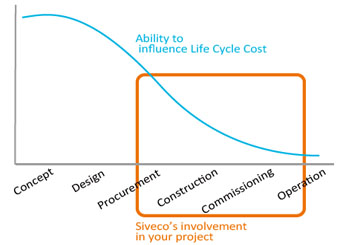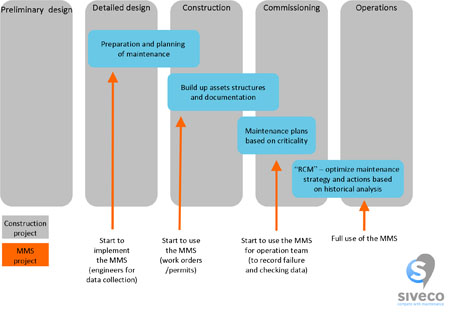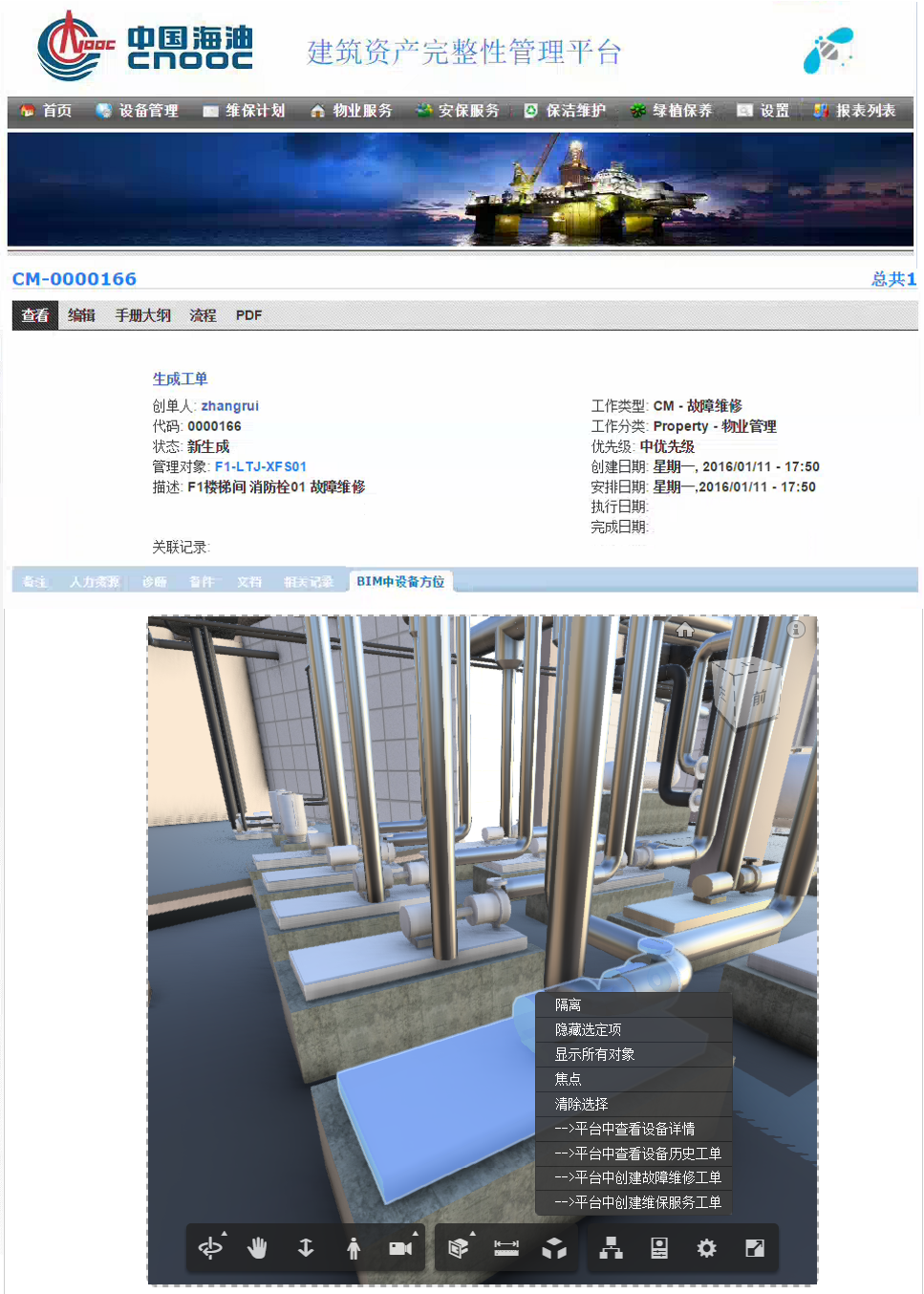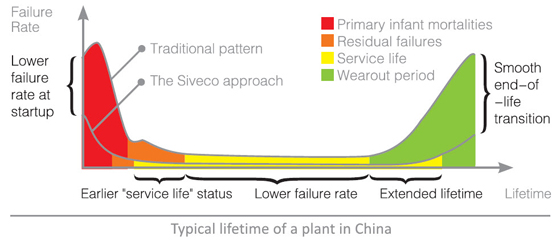Preparing maintenance from the construction stage
The earlier the better
Experience has shown that the earlier reliability and maintainability are taken into account in a construction project, the better. These should be specifically addressed from the design stage of a project, as illustrated below.

Ability to influence Life Cycle Cost over time
This approach, which consists in paying more attention to maintenance earlier in the project, to reduce future operation cost, differs markedly from that of Chinese engineering and construction companies, which emphasize cost control during construction with progressive adjustments and modifications of the design as the project moves ahead. Local EPC companies still lack an overall lifecycle perspective, hence the difficulty to obtain as-built drawings or preventive maintenance recommendation from them.
While the resulting speed and cost advantage has proven critical to support the country’s fast development, this construction-driven approach has also led to problems – most notably in terms of safety (deadly accidents at various construction sites have made headlines in the past few years) and maintenance (early replacement of major equipment, spiraling cost and reliability problems after a few years of operation). Partly as a result of this lack of preparation, maintenance is often purely reactive (firefighting) in the operation phase.
As a direct consequence of this lack of early concern for maintenance during construction, we observe that the quickest reliability improvements obtained during Siveco project in China are those related to design or installation problems, which should have been identified during commissioning, but instead go undetected for years. Quick fixes are applied, problems go unreported and no analysis is ever carried out. By conducting systematic root cause analysis, we are able to identify the problems and trace them back to construction issues.
The Siveco Way
Based on a long experience of greenfield infrastructure projects all over the world and lessons learnt in China in the past 10 years, Siveco has developed a specific expertise working alongside EPC companies and their equipment suppliers during the construction phase, ensuring smooth transfer of technical documentation from construction to operation, supporting plant commissioning and start-up with an accurate technical database and enforcing good maintenance practice from day one. Siveco China teams supports both owners and EPC companies to better prepare operations.
In China more than anywhere else, the CMMS turns out to be the ideal tool to bring structure to what would otherwise be perceived as a very abstract concept (“Prepare for maintenance? But the equipment has not yet been delivered!”). A concrete (deliverable) system, the CMMS allows us to clearly define steps in the maintenance preparation project. The “high-tech factor” introduced by the CMMS is of course a key motivator for engineers involved in the project.
The figure below summarizes the Siveco approach for maintenance preparation during a construction project based on the utilization of the CMMS:

The major benefits of this approach are highlighted below:
Detailed, accurate and easily accessible technical documentation
By working directly with suppliers, detailed and accurate technical documentation (specifications, contracts, spare-parts lists, etc.) can be made available to operation engineers in a structured manner directly in the CMMS, instead of being stored in containers, in shelves or even missing. This has a direct and immediate impact on the accuracy and efficiency of the work as well as on day-to-day decisions (where to purchase a part, how to disconnect an equipment etc.)
Integration with other automation subsystems
The construction phase is obviously the best time to integrate the CMMS with automation and supervision systems (DCS, SCADA, ISCS, BMS) that contain essential data for maintenance planning, as both systems can be designed and build accordingly. Large cost savings can be expected compared to similar integration performed in operation (with an existing supervision system). More importantly, more advanced functionality can be obtained, such as a full HMI integration (operators can access technical documentation directly from their supervision HMI) and more meaningful data transfer (e.g. traditional interfaces will transfer alarms and measurements to the CMMS indiscriminately, while in a joint implementation, the process will be designed to match the maintenance strategy).
Integration with BIM
More and more projects use BIM for design and construction purposes. Building the CMMS from the construction stage allows all CMMS data to be “natively” integrated with corresponding BIM data: while the BIM model holds architectural and spatial data, all equipment is linked to the CMMS database which contains advanced O&M data such as technical specifications, spare parts lists, documents, maintenance instructions. Such data, critical for future operation, requires specific consulting skills and database technologies than BIM suppliers do not provide. This approach allows the smooth build up of completely integrated CMMS-BIM. Siveco software products all provide user-interface integration allowing users to view the model (usually in Revit format) inside the CMMS and to access all data from CMMS to BIM, from BIM to CMMS.

Support for commissioning
Engineers supervising the commissioning process can be equipped with mobiles, allowing them to record each step of the process and corrective actions if required, ensuring follow-up of actions performed by the construction company or equipment suppliers. Faults occurring at an early stage – commissioning, trial runs – can be accurately documented in the CMMS historical database. Without a proper historical record, information will be lacking for future diagnosis, resulting in delays and temporary fixes rather than permanent resolutions of problems (for example design problems may not be identified and quick fixes may be applied instead, a very common practice in China).
The big picture
For a major infrastructure project, such as a metro line, the approach described above could easily save millions of RMB every year in indirect or consequential losses: downtime, increased repair costs, recurring problems etc. By taking maintenance into account early, it takes less time to get into the “useful lifetime” part of the famous reliability “bath-tub” curve, while the “wearing out” part will be delayed.

The Siveco way and its impact on the bathtub curve




